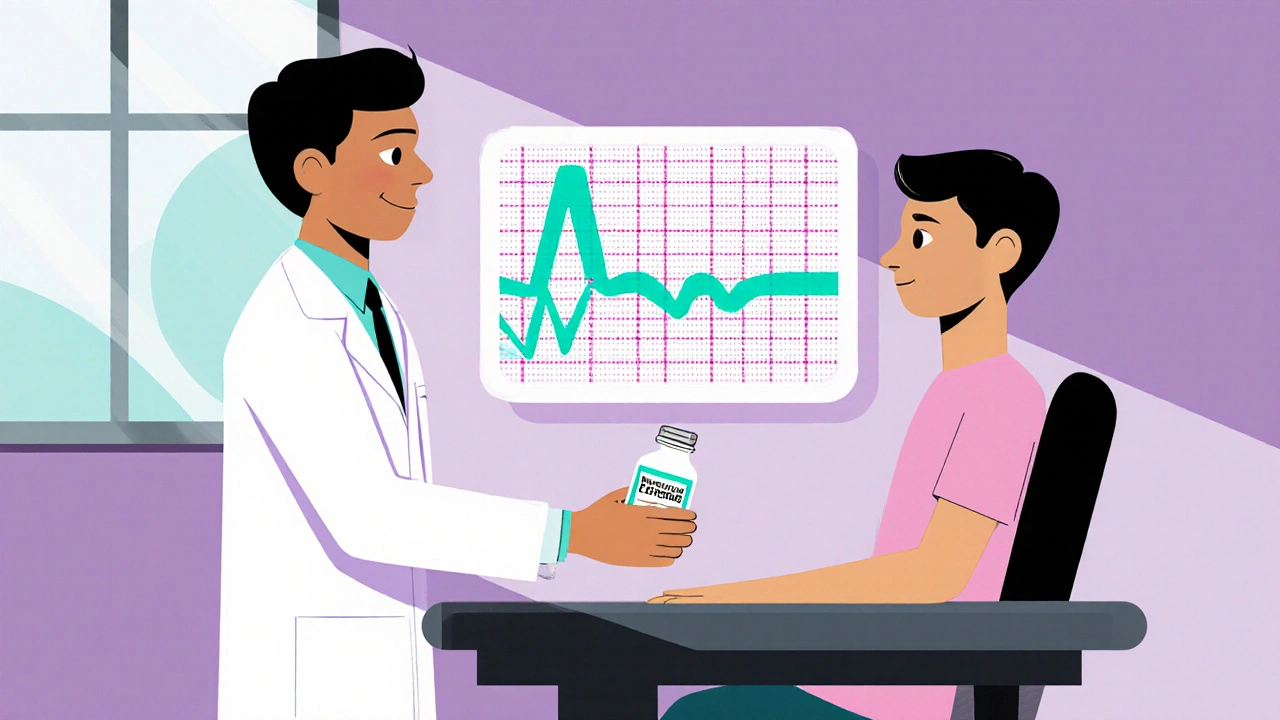Methadone and QT-Prolonging Drugs: How Combined Use Raises Arrhythmia Risk
Explore how methadone combined with QT‑prolonging drugs raises arrhythmia risk, with mechanisms, dosing tips, monitoring steps, and management strategies.
Continue ReadingWhen you take Methadone, a long-acting opioid used for pain management and opioid dependence treatment. Also known as methadone hydrochloride, it helps many people manage chronic pain or recover from addiction—but it can also affect your heart in ways most don’t expect. One of the most serious risks is QT prolongation, a delay in the heart’s electrical recovery phase that can lead to dangerous irregular heartbeats. This isn’t a rare side effect—it’s well-documented, and it’s why doctors check your ECG before and during treatment.
QT prolongation from methadone doesn’t happen to everyone, but certain people are more at risk. If you’re over 60, female, taking high doses (over 100 mg/day), or using other drugs that also stretch the QT interval—like certain antibiotics, antidepressants, or antifungals—your risk goes up. Even low doses can be risky if you have low potassium or magnesium, heart disease, or a family history of sudden cardiac arrest. It’s not just about the pill you’re taking; it’s about how your body reacts to it, and what else is in your system.
The real danger? Torsades de pointes, a life-threatening type of ventricular arrhythmia triggered by QT prolongation. It doesn’t always come with warning signs. Some people feel dizzy or have palpitations. Others just pass out. In the worst cases, it leads to sudden cardiac arrest. That’s why regular ECG monitoring is non-negotiable for people on long-term methadone therapy. It’s not a one-time check—it’s an ongoing safety step.
You might be surprised to learn that even over-the-counter meds can make this worse. Cold remedies with pseudoephedrine, antihistamines like diphenhydramine, or even some herbal supplements can push your QT interval further. Your pharmacist should know this. Your doctor should know this. And you should know this too. Keeping a simple list of everything you take—prescription, OTC, or supplement—is one of the best ways to protect yourself.
There’s no magic fix, but there are clear steps you can take. Ask for an ECG before starting methadone. Get one again after 2–4 weeks, and then every 6–12 months if you’re stable. Tell your provider about any new symptoms: skipped beats, fainting, unusual fatigue. Don’t skip blood tests for electrolytes. And if you’ve ever had a heart rhythm problem before, make sure it’s documented in your file.
What you’ll find in the posts below are real, practical stories and guides from people who’ve walked this path. You’ll see how methadone interacts with other drugs, what symptoms to watch for, how doctors monitor risk, and what alternatives exist when the heart risk is too high. This isn’t theoretical—it’s about real people, real heart rhythms, and real choices. You’re not alone in this. The information is here to help you stay safe, informed, and in control.

Explore how methadone combined with QT‑prolonging drugs raises arrhythmia risk, with mechanisms, dosing tips, monitoring steps, and management strategies.
Continue Reading